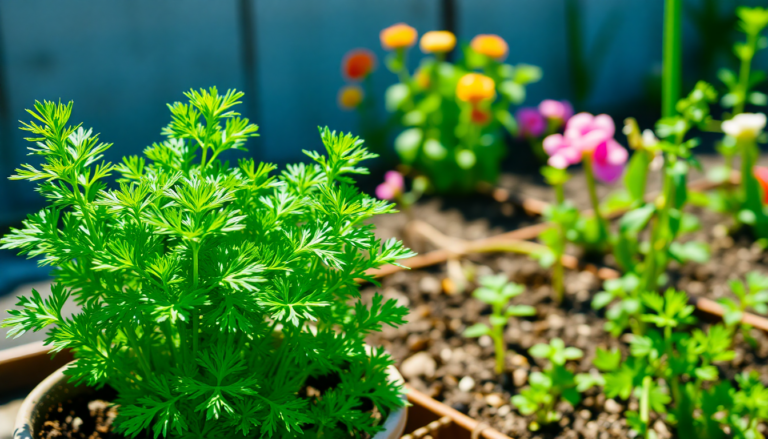Argomenti trattati
Have you ever thought about growing your own herbs? If you’re a novice in the gardening game, parsley is your go-to herb! Not only is it incredibly easy to cultivate, but it also adds a burst of flavor to a wide variety of dishes. Whether you have a sprawling garden or just a small balcony, parsley can thrive in both spaces. Its delicate, feathery leaves not only enhance your meals but can also spruce up your ornamental pots when paired with vibrant annual flowers.
Understanding parsley’s lifecycle
Parsley is classified as a biennial herb, meaning it completes its life cycle in two years. In the first year, it establishes its leafy growth, and in the second, it produces a flower stalk adorned with tiny, greenish-yellow blooms. While these flowers attract pollinators, many gardeners find that the leaves can turn bitter in the second year. For this reason, it’s common to start fresh parsley plants each year for culinary uses. Interestingly, you can leave your parsley in the ground during winter; if the climate is mild, it may surprise you with fresh growth come spring.
Why plant parsley?
Even if you’re not keen on cooking, there are plenty of reasons to consider adding parsley to your garden. This herb serves as a host plant for the larvae of the stunning swallowtail butterfly. These caterpillars enjoy munching on the leaves before transforming into butterflies, making parsley not just a culinary herb but a contributor to local biodiversity. So, why not plant a few extra parsley plants to support these beautiful pollinators?
Growing conditions for parsley
Parsley thrives in cooler temperatures, making it ideal for spring and fall planting in most regions. In warmer climates, it’s best to cultivate parsley during the cooler months. One thing to note is that parsley seeds can be somewhat temperamental, with germination times ranging from seven to thirty days. For ease, many gardeners prefer to start with seedlings. Once the danger of frost has passed, you can transplant seedlings into your garden or pots.
Light and moisture requirements
This herb loves sunlight, needing at least six hours of direct light daily. However, in hotter climates, providing some afternoon shade can help it flourish. Maintaining consistent moisture is also crucial; parsley doesn’t appreciate being completely dried out. It’s important to keep the soil moist but not soggy, as parsley prefers well-drained soil rich in organic matter. If you have heavy clay soil, planting in pots is a smart move to prevent waterlogging.
Nourishment and care
To keep your parsley plants happy and productive, consider applying a balanced fertilizer twice a season. If you’re growing parsley in containers, a water-soluble fertilizer every month can work wonders. One of the best parts about growing parsley is that it generally has few pest problems. However, be mindful of fungal diseases like leaf spot or powdery mildew, which can appear as unsightly spots on the leaves. To prevent these issues, space your plants adequately for good airflow. Occasionally, you might spot aphids; a strong spray from your garden hose is usually enough to dislodge them.
Harvesting your parsley
Once your parsley reaches about eight inches tall, you can start snipping off leaves or stems as desired. For the best results, cut from the outer edges of the plant, which encourages continuous growth. If you need to harvest a whole stalk, cut it close to the ground. This method will ensure you have a steady supply throughout the growing season, so you can sprinkle fresh parsley on everything from pasta to salads.
Types of parsley to explore
There are two primary types of parsley you’ll encounter: curly-leaf and flat-leaf (also known as Italian parsley). Each has its unique flavor and uses in the kitchen. Additionally, root parsley (Petroselinum tuberosum) boasts edible leaves and a white root that can be cooked like parsnips or turnips, though it’s less commonly found in home gardens.
Pet safety and parsley
While parsley isn’t toxic to pets like garlic or onions, it does contain furanocoumarins, which can cause skin irritation if ingested in large amounts. Any plant, including parsley, can upset a pet’s stomach if consumed excessively. If you suspect your furry friend has eaten too much parsley, it’s always wise to consult your veterinarian.
Growing parsley can be a rewarding experience, whether for culinary uses or to attract beautiful butterflies to your garden. With a little care and attention, you’ll have fresh herbs at your fingertips, adding flavor and brightness to your meals.

